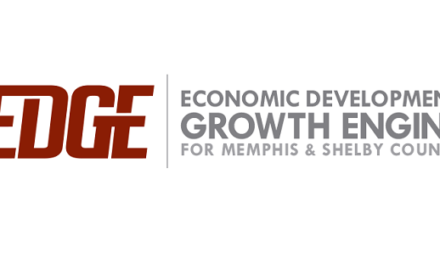From Voice of San Diego:
During tough economic times, the best strategy to sell politically unpopular projects that primarily benefit the privileged few at the expense of the many is to argue that they will serve as “engines of economic growth.”
This strategy was used by former redevelopment chief Fred Maas to make the case for robbing the city’s General Fund — and county and state budgets — to pay for more downtown redevelopment. It is being used by the Chargers to make the case for building a new downtown football stadium. And it is a key argument for expanding the city’s Convention Center. In each case, supporters justify these massive projects, and their gigantic taxpayer subsidies, by arguing that they will create oodles and oodles of new jobs and generate hundreds of millions of dollars in economic activity.
Indeed, Convention Center boosters argue the expansion will result in nearly $700 million in economic impact and create almost 6,900 new jobs. It’s a claim that even found its way into the mayor’s recent State of the City address.
Those of us who are skeptical about the wisdom of the proposed expansion and would prefer instead to invest the expected $520 million cost into much more essential and productive civic infrastructure — with the potential to benefit many more San Diegans — should welcome the opportunity to debate the merits of the project on economic rather than political grounds, because it’s a debate project supporters are sure to lose.
The following four key points highlight the fatal flaws in the argument that the Convention Center expansion represents a smart investment for the regional economy:
1. The economic impact analysis justifying the projected employment gains greatly overestimates the impact of the expansion. As Murtaza Baxamusa has skillfully showed, the consultant who prepared the economic impact report inflated the numbers in several ways. The report relied on outdated data about spending patterns by convention attendees, overestimating their impact on the local economy by a substantial margin, and incorrectly included economic impacts that will actually be realized outside of the region. Baxamusa’s more appropriate estimate suggests that the expansion will create only 4,500 permanent jobs in San Diego — 35 percent fewer than the number used by the city and the mayor.
2. The consultant’s own numbers show that nearly 60 percent of the newly created jobs will be in industries that pay poverty wages and offer employees few health or other benefits. These estimates (see page 28 here) show that 2,300 of new jobs will be created in in the hotel and lodging industry, where the average annual wage is under $28,000, and 1,700 jobs will be created the food service industry, where the average annual wage is $17,000. Indeed, Baxamusa’s analysis suggests that the quality of jobs created by the additional convention business will be so poor that a large share of workers filling these new positions will qualify for taxpayer-funded healthcare and other welfare benefits. Are these really the kinds of jobs taxpayers want to spend $520 million subsidizing?
3. Even using the city’s preferred inflated numbers, the Convention Center represents an incredibly poor return on investment. Given the most recent $520 million price tag for the expansion, each of the 6,900 new jobs the mayor touted in his speech last week will cost the taxpayers more than $75,000. If the goal is to maximize job creation, expanding the Convention Center is one of the worst ways to accomplish it.
Economists have identified far more cost-effective and successful strategies for using public resources to stimulate the economy. These including using tax dollars to pay employees to go back to school to improve their skills and offering businesses “hiring credits“. Even on the high end of estimates, hiring credits would cost about $28,000 per job created, meaning that the same $520 million taxpayer investment could generate more than 18,500 new jobs — nearly three times the economic impact of the Convention Center expansion. Unlike the expansion, the hiring credits would also stimulate employment outside the lowest-paying industries.
4. Finally, the truth is that little of the new spending or few of the jobs created by the Convention center expansion will actually be “new.” With the Convention business not expected to grow quickly, if it all, in the near future, the vast majority of the economic gains projected for the expansion will be the result of bringing conventions currently held elsewhere to San Diego. The local jobs created as a result would offset by jobs lost elsewhere.
This is important for two reasons. From an economic standpoint, it seems incredibly silly and unproductive to invest half a billion dollars to simply shift economic activity from one region of the country to another. (Almost as silly and unproductive as spending hundreds of millions to move football teams from one stadium to another.) It’s much more beneficial to use scarce public dollars to invest in projects that actually grow the size of the economy, increasing productivity and overall societal wellbeing.
From a practical standpoint, cities that lose business to San Diego will not simply sigh and abandon their convention centers. Instead, they will take steps to entice conventions to return, including investing millions to expand their own centers with the hope of using free space as an inducement. This type of convention “arms race” has characterized the industry for much of the last decade and will likely continue. So expect that another expansion will be needed five to 10 years from now, at an even greater cost to taxpayers, just to maintain San Diego’s market share and preserve the “permanent” jobs that are being promised as part of this current round of expansion.
Vladimir Kogan is a co-author “Paradise Pundered: Fiscal Crises and Government Failures in San Diego.” His e-mail address is vkogan@ucsd.edu. He lives in University City.




Citizens should always evaluate the words of their politicians carefully — all politicians, not just the ones in the “other” party (whichever that might be for a particular person).
I wonder if there is a square footage that makes a difference between levels of impact. Memphis is not considering joining the 1 million square foot level, I don’t think. Is there a level of expansion that is prudent, and efficient?
I suspect part of that requires transparency and realistic projections from politicians.